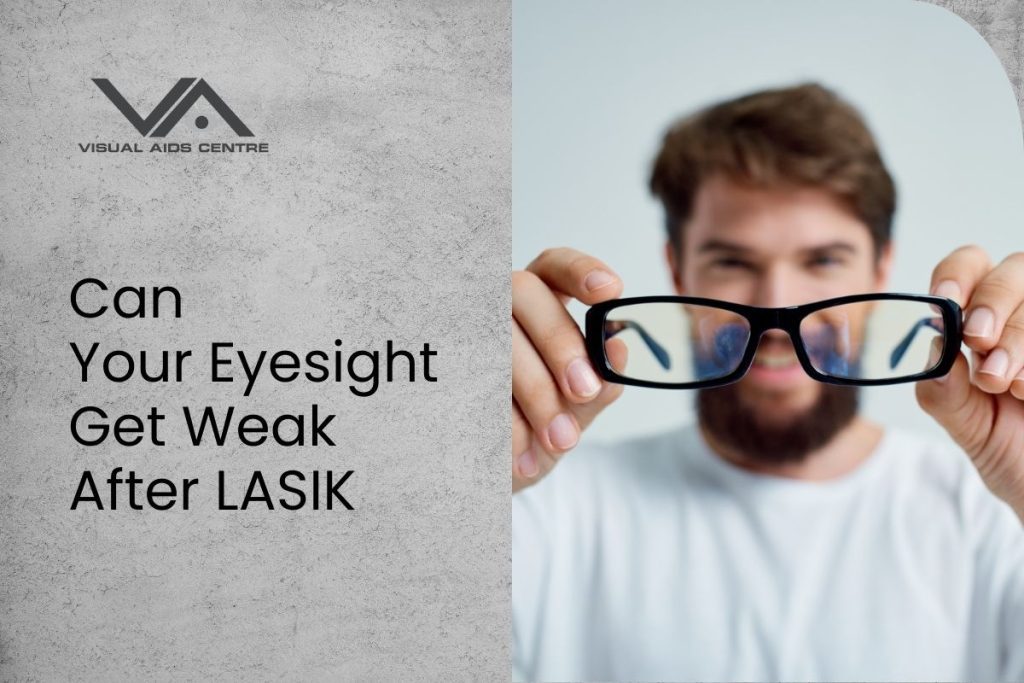Table of Contents
Toggle
LASIK eye surgery reshapes the eye’s front tissue to improve vision. These changes are permanent and can last a lifetime. But, it’s important to remember that LASIK doesn’t stop the natural aging process.
As we age, our vision can get worse due to many factors, even after LASIK. This natural decline can affect how well the surgery works. It might lead to a decrease in visual acuity over time.
Key Takeaways
- LASIK surgery permanently reshapes the cornea to improve vision.
- The natural aging process can affect vision after LASIK.
- Vision correction through LASIK is not a guarantee against future visual decline.
- LASIK outcomes can be influenced by various age-related factors.
- Understanding the limitations of LASIK is key for managing expectations.
Understanding LASIK Surgery and Its Expected Outcomes
LASIK surgery reshapes the cornea to fix nearsightedness, farsightedness, and astigmatism. It changes the cornea’s shape, which is the eye’s clear outer layer. This surgery corrects vision problems.
LASIK treats many vision issues. It’s a top choice because it often means less need for glasses or contacts. But, like any surgery, LASIK has risks like dry eye, infection, and vision not being corrected right.
How LASIK Surgery Works
The LASIK process starts with a thin flap in the cornea. This flap is lifted to expose the tissue underneath. An excimer laser then reshapes the cornea to fix vision.
After, the flap is put back where it belongs. It heals on its own.
Potential Risks and Complications
LASIK is mostly safe, but there are risks. These include vision changes, like not being corrected enough or too much. Dry eye and seeing halos or glare are also possible.
Knowing about these LASIK risks is key. It helps manage what to expect and makes choosing LASIK a better decision.
Can Your Eyesight Get Weak After LASIK? The Truth Explained
While LASIK is a highly effective surgery, some individuals may experience changes in their vision post-procedure. Vision changes after LASIK can occur due to various factors. These include the progression of the initial condition that LASIK aimed to correct, presbyopia, and other age-related changes.
One of the primary concerns is the development of presbyopia. This condition typically starts in the early to mid-40s, affecting near vision. LASIK does not prevent presbyopia. Some patients may need reading glasses or other corrective measures.
Common Side Effects and Complications
Some people may experience dry eye, glare, or halos after LASIK. Dry eye is a common side effect. It results from the temporary disruption of corneal nerves during the surgery. Visual disturbances like glare and halos are usually mild and temporary but can persist in some cases.
Understanding these complications and side effects is key. It helps manage expectations and maintain optimal eye health after LASIK. Regular follow-up appointments with an eye care professional can help identify and address any issues promptly.
By being aware of the possible vision changes, individuals can enjoy LASIK’s benefits. They can also minimize the risk of complications.
Common Vision Changes Experienced After LASIK
The LASIK recovery process involves several common vision changes that typically resolve over time. Patients may experience a range of symptoms as their eyes heal. These include blurry vision, dry eye, sensitivity to light, and various visual disturbances.
Blurry vision is one of the most common complaints after LASIK surgery. This symptom usually diminishes as the eyes heal. It’s essential to follow the post-operative care instructions provided by your surgeon to ensure a smooth recovery. Using lubricating eye drops as recommended can help alleviate dryness and discomfort, contributing to a more comfortable LASIK recovery process.
Managing Dry Eye After LASIK
Dry eye is another frequent side effect of LASIK. This condition occurs when the eyes do not produce enough tears or when the tears are of poor quality. To manage dry eye and maintain good eye health after LASIK, patients can use artificial tears, avoid rubbing their eyes, and follow a healthy lifestyle that includes a balanced diet rich in omega-3 fatty acids.
Visual Disturbances and Sensitivity to Light
Some patients may experience visual disturbances such as glare, halos, or double vision, specially at night. Sensitivity to light can also be a challenge during the LASIK recovery process. Wearing sunglasses with UV protection and following the recommended post-operative care can help mitigate these issues.
Understanding these common vision changes and taking proactive steps to manage them can significantly enhance the overall LASIK experience. By maintaining good eye health after LASIK and adhering to the post-operative instructions, patients can enjoy the benefits of clearer vision and a reduced dependence on glasses or contact lenses.
Factors That May Influence Vision Stability Post-LASIK
Many things can affect how well you see after LASIK. Knowing about these factors helps manage your hopes and keeps your eyes healthy after surgery.
Age is a big factor in LASIK results. As we get older, our eyes change, which can impact our vision. For example, presbyopia, which starts in the 40s, might make reading glasses necessary, even after LASIK.
Health Conditions and Their Impact
Health issues like dry eye, cataracts, or retinal diseases can also affect LASIK results. It’s important to share your medical history with your eye doctor to understand any risks.
Lifestyle Choices and Eye Care
How you live and take care of your eyes is key to keeping your vision stable. Regular eye checks and good eye care can spot and manage problems early. Also, protecting your eyes from UV rays and living a healthy lifestyle can improve your LASIK results.
Knowing what can affect your vision after LASIK helps you prepare and take care of your eyes. Regular visits to an eye doctor are important to address any issues and get the best LASIK results.
LASIK Enhancement Procedures: When and Why They’re Needed
Some people need LASIK enhancement because the first surgery didn’t fully fix their vision. Vision can change over time, and this might happen for many reasons. This includes changes in the eye condition that led to LASIK in the first place.
These enhancements aim to refine the initial correction. They’re considered when the first LASIK surgery doesn’t fully improve vision. Each case is unique, and the decision to enhance is based on individual needs and eye health.
Reasons for LASIK Enhancement
Several reasons might lead to needing a LASIK enhancement. These include if the first surgery didn’t correct vision enough or if it corrected too much. Vision problems can also come back over time. Changes in the cornea or other eye issues can affect the first surgery’s success.
It’s important to know that enhancements are a normal part of LASIK for some. Understanding the need for and benefits of enhancements helps patients make better eye care choices.
The LASIK Enhancement Process
The enhancement process is similar to the first LASIK surgery. It uses a laser to reshape the cornea. The details of the procedure can vary based on the patient’s needs and the surgeon’s expertise.
Talking about LASIK enhancements helps patients understand their journey. It prepares them for the best possible outcome for their vision.
Managing Expectations: What Indian Patients Should Know
LASIK surgery is popular in India for fixing vision problems. But, it’s important to know what to expect. Knowing the good and bad outcomes helps patients be happy with their choice.
Patients in India should know LASIK works well for many vision issues. But, it might not solve all vision problems forever. Some might need glasses again for things like reading or driving at night.
The success of LASIK depends on many things. This includes the patient’s eye health, how bad their vision problem is, and the surgeon’s technology. New LASIK methods, like wavefront-guided, can give better results.
Realistic Outcomes
It’s key to have realistic hopes about LASIK results. LASIK can really help your vision, but results can differ. Things like age, other eye issues, and cornea shape can affect how well it works.
Patients should also know about LASIK’s risks. These include dry eye, infection, or vision problems. Talking to a skilled LASIK surgeon can help set the right expectations. This way, patients are ready for what might happen.
In short, LASIK is a great way to fix vision problems. But, it’s important to manage your hopes. Knowing what LASIK can do and its possible risks helps Indian patients make smart choices for their eyes.
How to Maintain Optimal Eye Health After LASIK
Keeping your eyes healthy after LASIK is a mix of follow-up care, good hygiene, and protection. This way, your eyes stay healthy and your vision sharp.
Follow-up care is key in the LASIK recovery. Regular visits to your eye doctor help track your healing. You’ll see them soon after surgery, then at one week, one month, three months, six months, and a year later.
Proper Eye Hygiene Practices
Good hygiene stops infections and helps healing after LASIK. Your eye doctor will tell you how to care for your eyes. This usually means using eye drops and not rubbing your eyes for a few weeks.
Protecting Your Eyes
Protecting your eyes is a long-term job. Wear sunglasses with UV protection to block harmful rays. Also, avoid harsh chemicals and wear protective eyewear during risky activities.
Following these steps and seeing your eye doctor regularly will keep your eyes healthy. This way, you can enjoy the benefits of LASIK for many years.
Conclusion
LASIK surgery has changed how we fix vision problems, helping millions. It’s important to know what LASIK can and can’t do before deciding. While it can greatly improve your vision, it’s also good to know about its risks and how they might affect your results in the long run.
By setting realistic expectations and taking good care of your eyes after LASIK, many people see clearly for years. Regular eye exams and a healthy lifestyle are key to keeping your eyes in top shape. In the end, LASIK is a good choice for those wanting to reduce their need for glasses or contacts, making it easier to see the world more clearly.













